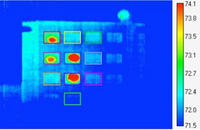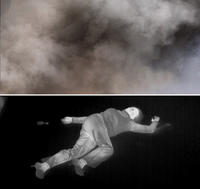-
Supreme Court to rule on age of "Big Brother" surveillance

This November the Supreme Court is gearing up to hear a landmark case which will decide how far law enforcement agencies can pry into an individual’s private life; federal judges argue that the use of GPS surveillance by law enforcement is an “Orwellian intrusion” into private life and violate the Fourth Amendment; meanwhile police say GPS tracking is simply a more efficient way to tail a suspect’s car or track their movements, things they can currently do without a warrant
-
-
$1.1 million order for Implant Sciences' portable explosives detectors
Implant Sciences Corporation, a developer of explosives detection technology, recently announced that it had received a $1.1 million order for its portable explosives detection systems; with the latest purchase, Implant Sciences will supply its Quantum Sniffer QS H-150 portable devices to the Middle East for use by critical infrastructure operators
-
-
Counter-terrorism expert: Domestic radicalization "blown out of proportion"
David Schanzer, the director of the Triangle Center on Terrorism and Homeland Security and an associate professor in Public Policy at Duke University, discusses the over inflation of the threat from domestic radicalization, ways to prevent young Muslim Americans from becoming radicalized, and the opportunity that the Arab Spring has presented the United States
-
-
Immigration offenses make Latinos new majority in prisons
A new government report found that Latinos now account for more than half of all felony offenders sentenced this year as a result of immigration offenses; the report released on Tuesday by the U.S. Sentencing Commission revealed that Latinos comprised 50.3 percent of all people sentenced in the first nine months of this fiscal year
-
-
Gait biometrics shows promise
A new biometric technology may soon join retinal scans, voice recognition, and fingerprints as a means to identify individuals: gait pattern biometrics; a method of identifying individuals by the way they walk, saunter, swagger, or sashay has achieved accuracy of about 90 percent in early trials
-
-
Taser-related fatalities raise safety concerns

As police across the United States increasingly turn to Taser guns as a non-lethal weapon, the device’s safety has come under scrutiny following several recent deaths involving Tasers; last week the Fayetteville police department in North Carolina recalled all of its Taser M26 units following the death of a fifty-six year old political activist who died after being stunned by police
-
-
NYPD works with suburban police to stop terrorism
In the ten years since 9/11, the New York City police department (NYPD) has worked to forge closer ties with local police departments in an effort to stop terrorist attacks; “The idea is to add rings of security,” explained chief inspector John Hodges of the Westchester County police; “What’s changed since 9/11 is New York City has learned that people who might want to bring something into New York City will have to infiltrate from somewhere outside,” he said
-
-
Terrahawk showcases its mobile surveillance vehicle
This Thursday Terrahawk, LLC will show off its Mobile Utility Surveillance Tower (MUST) to members of the U.S. House of Representatives and the Senate along with their staffs; with MUST, law enforcement agencies can quickly set up a mobile surveillance tower for emergency response, crowd control, or general surveillance
-
-
Courts uphold rights of citizens to record police in action
The U.S. Court of Appeals for the First Circuit in Boston, in a unanimous decision that many see as a victory for the First Amendment, has recently upheld the right of an attorney to sue police after the police arrested him for using his cell phone to make an audio and video recording of officers conducting an arrest on Boston Common in the fall 2007
-
-
Thermal imaging allows ATM theft from a distance

ATMs’ PINs can be stolen using thermal imaging cameras; when ATM customers press down keys to enter their personal code number, they leave behind residual heat from their fingertips; thermal imaging cameras can catch these numbers
-
-
Facebook could mean the end of undercover ops
Law enforcement officials have begun using Facebook to identify criminals and gather information about their habits, but the technology has the potential to be a double edged sword; an undercover officer could successfully infiltrate a gang only to have their cover blown after their photo is recognized and their Facebook profile carefully scrutinized
-
-
Unusual smuggling tunnel found near California-Mexico border

Agents with U.S. Immigration and Customs Enforcement’s (ICE) Homeland Security Investigations (HSI) continued to gather evidence following the discovery of an incomplete pipeline-style smuggling tunnel last Thursday afternoon; the tunnel originated beneath the floor of a vacant Mexican supermarket
-
-
Vumii unveils new thermal imaging cameras

Vumii, a firm that specializes in developing surveillance cameras, recently announced the addition of four new thermal imaging camera lines, expanding on its existing line of LED and laser-illuminated cameras
-
-
Identifying bad guys in a crowd
New CCTV technology aims to do two things: for post-incident forensic analysis the system retraces a person’s steps after they have left a site; and for real-time analysis the system alerts security to immediate or imminent threats; researchers say the technology will also address privacy concerns: if a computer could automatically detect and preserve footage “of interest,” the images of the rest of the people captured by CCTVs can be safely deleted, minimizing the invasion to privacy
-
-
San Antonio’s "Piracy King" pleads guilty
Police in San Antonio recently put an end to the “Piracy King’s” reign; last Thursday, Ernest Christopher Smith, nicknamed the piracy king by local law enforcement officials because of the large number of fake DVDs he sold at local flea markets, pleaded guilty to trafficking in counterfeit goods.
-
More headlines
The long view
How Male Grievance Fuels Radicalization and Extremist Violence
Social extremism is evolving in reach and form. While traditional racial supremacy ideologies remain, contemporary movements are now often fueled by something more personal and emotionally resonant: male grievance.
